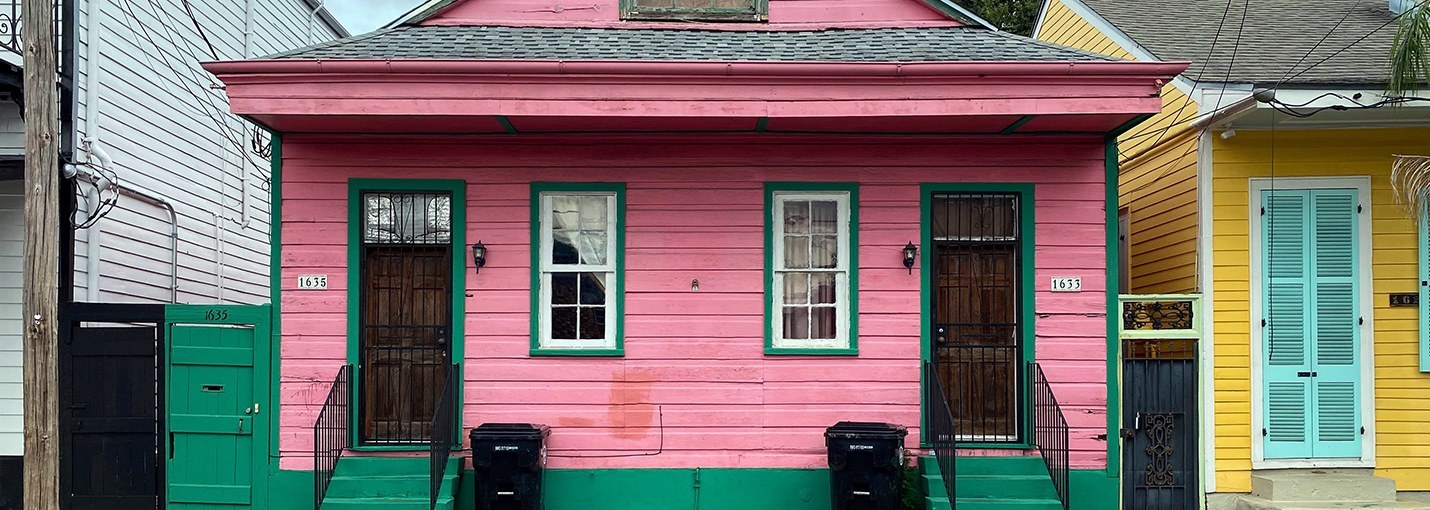Asbestos fibers can become airborne during Louisiana’s hurricane season.
Most old buildings contain some asbestos products, so hurricane debris can be a double danger. Here’s what to watch out for.
Whenever hurricane season approaches in areas of the U.S. deemed high risk, residents can’t help but to be reminded of the possibility of experiencing dangerous storms and devastating damage. The people of Louisiana, especially those in New Orleans, know all too well the destruction caused by these storms – particularly after Katerina and Ida, which tore through the state’s landscape, causing a ripple effect still evident today.
However, the destruction and damage to property is not the only thing to be wary of during hurricane season. The silent risk of asbestos exposure is also a serious concern. Asbestos is a naturally occurring mineral that was long used in building materials due to its inexpensiveness, durability, and heat-resistant properties, and it still lingers inside walls, floors, and techos today. It was used in tejas para techos, insulation, tile jobs, electrical cord covering, and in other applications.
Inhaling airborne asbestos fibers can cause many health problems, including lung cancer and mesothelioma.
Now well-known as a carcinogen that has been linked to lung cancer, mesothelioma, and asbestosis, among other diseases, asbestos has been largely phased out over the years, but hasn’t been entirely eliminated. The U.S. has chosen not to outlaw asbestos, and the Environmental Protection Agency (EPA), instead, is responsible for completing risk assessments when determining whether the mineral can still be used.


Louisiana’s Asbestos Problem
Louisiana, specifically, has a long history of utilizing asbestos in industry, largely due to its historic shipyards, mining sector, and in the construction of numerous public attractions that contain the mineral. Some ejemplos of where asbestos was extensively used include:
- Astillero Higgins, Nueva Orleans
- Refinerías de Calumet, Shreveport y Princeton
- W.R. Grace Exfoliation Facility, New Orleans – between 1965 and 1985, the facility received almost 150,000 tons of asbestos-containing vermiculite direct from the infamous mines of Libby, Montana
- Superdomo de Luisiana, Nueva Orleans
- Industrias Avondale, Bridge City
- Puerto de Baton Rouge, Luisiana
- Schools – in 2018, for example, New Orleans Parish public school was closed multiple times to carry out removal projects
Hurricane season increases the risks of asbestos materials becoming airborne and spread around.
Because of this – and the fact that Louisiana is prone to hurricanes – there is a high possibility that microscopic asbestos fibers will be kicked into the air and leach into water supplies following natural disasters. In fact, before Hurricane Katrina, it was estimated that around 2.5 million homes in Louisiana contained asbestos! So, in the aftermath, air quality testing was performed through fall 2005 to continually monitor a variety of pollutants, including ozone, particulate matter, asbestos, and volatile organic compounds.
Hurricane Ida, which hit Louisiana in 2021, also caused significant damage to many buildings, and a great number of people ended up being exposed. Many regulations concerning cleanup and removal were modified following the disaster.
Of course, hurricanes aren’t the only ‘act of god’ known to kick dangerous amounts of asbestos into the air, but these historical events have certainly contributed to the state’s asbestos concerns, and subsequent legislation and safety requirements surrounding the issue.
The Bottom Line? Stay vigilant, remove asbestos using a pro.
As mentioned previously, there has been a greater awareness of the health risks associated with asbestos since the mid-1980s, and stricter regulations have been implemented to ensure that buildings are constructed with safer materials. However, storm damage can still cause previously enclosed asbestos to become friable and be ingested.
The Latency of Asbestos Diseases: Illnesses like asbestosis and lung cancer can take 20-50 years to appear.
Due to symptom latency – with diseases sometimes not surfacing until decades later – those who inhaled the fibers will likely not see the consequences for years to come. At the same time, mesothelioma and lung cancer are asbestos-related illnesses and could be fatal without an early diagnosis.
Asbestos testing and abatement is best handled by experienced, licensed, professionals.
All that being said, it’s important to limit exposure and to seek medical attention should a person suspect they’ve been exposed. And, in general, the following safety tips can be followed to reduce exposure during hurricane season:
- Always consult the help of a professionally trained person in handling asbestos-containing materials.
- If a building is old, there is a high probability that asbestos is present, and having it tested is key before handling any debris.
- Steering clear of exposed asbestos materials in the aftermath of a hurricane, or using protective gear, will help ensure fibers aren’t inhaled.
- Workers who are cleaning up property damage should assume asbestos and other hazardous materials are present and proceed with caution.
- If exposed, it’s always better to be safe than sorry and seek immediate medical care.
- If diagnosed with an asbestos-related illness, a law firm specializing in asbestos claims, like AsbestosClaims.law, can help clients navigate the legal process and ensure they receive any available compensation.
Because of the possibility of microscopic fibers lingering in older Louisiana buildings, and since the U.S. hasn’t outlawed asbestos, avoiding all areas where exposure is possible after a hurricane is hard to do. Thus, each individual should act as their own best advocate when it comes to taking precautions and seeking medical and/or legal help. To learn more, contact the experienced team at AsbestosClaims.law hoy.




